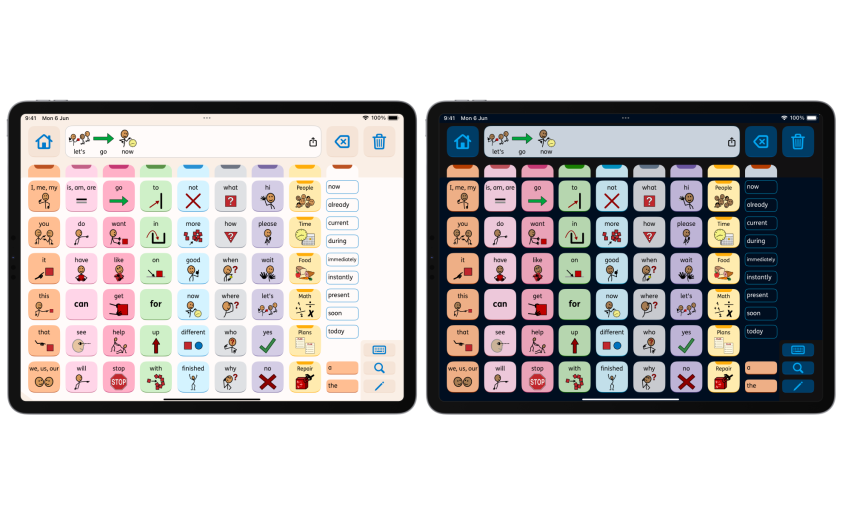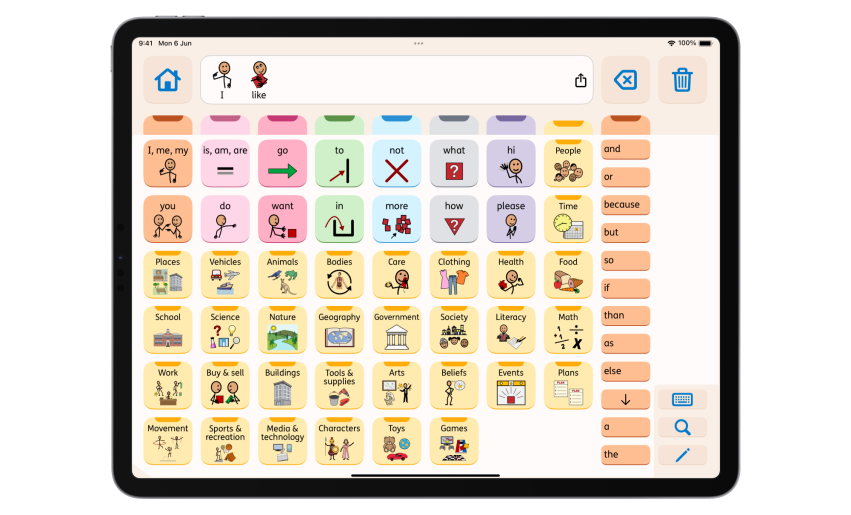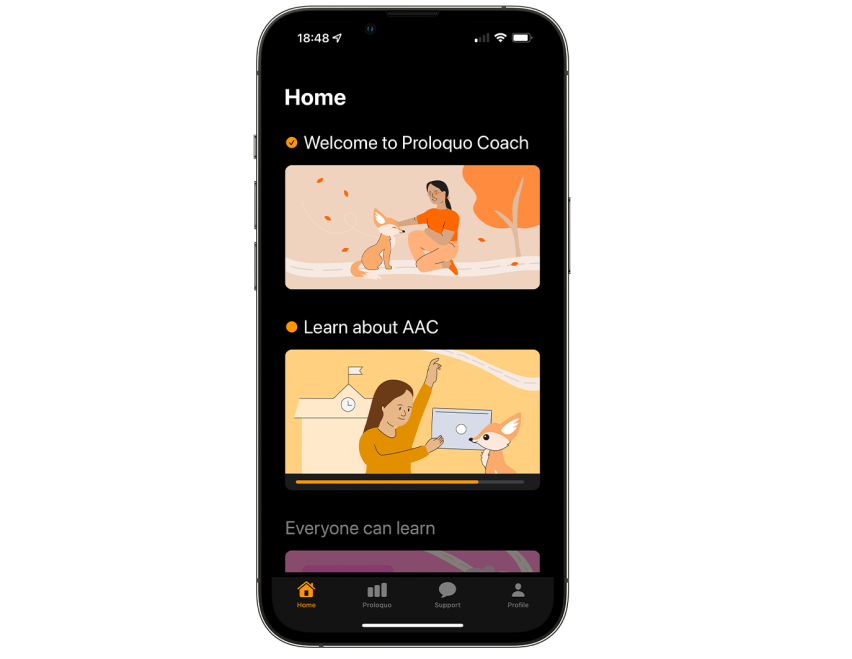(Updated February 14, 2024)
Modeling is important
Children learn language by being immersed in their mother tongue. They observe and listen to people speaking to them and around them all day. They experiment with producing sounds and speak their first words. A good AAC system supports and facilitates this natural acquisition of language. Good communication partners use the AAC system, selecting graphic symbols as they speak the word, to provide a model for the AAC user to observe and learn. This process is commonly called modeling. (Research on AAC interventions may refer to it as aided language stimulation, augmented input, or aided language input.)
Modeling is a well-established research-based intervention. The goal is to mimic the immersion children naturally get with speech. The more modeling occurs by everyone around the AAC user, the faster they can learn how to use the system and develop their language skills. With this in mind, we emphasized the need to support modeling when designing Proloquo.
Modeling as a starting point
Modeling is an intervention for children acquiring language through AAC. This means the child is not the only user of the communication system. We designed Proloquo to also support parents, teachers, and other communication partners as users . The logic that guided us is that the easier we make Proloquo to use, the more it would be used. At first by adults, and then by the child. The more Proloquo is used around the child, the more likely it will be that they can expand their language and communication skills. We took a number of steps to facilitate modeling:
- Make the visual design of Proloquo attractive and inviting
- Make Proloquo easy to learn and use
- Design a transparent and self-evident vocabulary
- Give everyone around the AAC user easy access to Proloquo
- Have a fixed motor plan for essential words
- A companion coaching app - Proloquo Coach
Attractive and inviting visual design
Therapists or engineers typically design AAC systems. We took a much more holistic approach. Proloquo was designed by a team that included speech therapists, special educators, parents, engineers, and designers. Our design team has expertise in both visual design and user experience, including user testing and accessibility standards. The initial prototype was beta tested by AAC users, parents, and therapists. All of these people worked together to design an inviting interface where AAC best practice is combined with design best practices. Everything from button shapes, colors, spacing, and layout, went through multiple iterations over several months until we arrived at clean designs for both light and dark mode.








